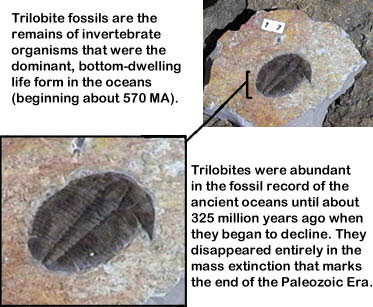


 |
 |
 |
Two different modes of preservation include; preservation without alteration and preservation with alteration. Examples of the modes of preservation without alteration include: freezing, mummification and unaltered shell remains. Examples of modes of preservation with alteration include: permineralization which is the result of a chemical precipitating into the pore space; replacement which occurs when there is actual molecular exchange of substances that were once part of an organism with minerals carried in by percolating water solutions; and carbonization which occurs when soft tissues are preserved as films of carbon. Casts and molds are another type of fossilization where the physical characteristics of organisms are impressed in to the sediment prior to the formation of a rock. Molds are produced when shell material is progressively removed by leaching so at to leave a void in the rock bearing the surficial features of the original shell. Casts are produced when the void between the internal and external mold is filled with mineral matter; a cast becomes a model or replica of the organism.
